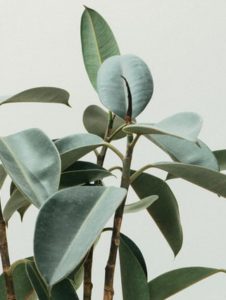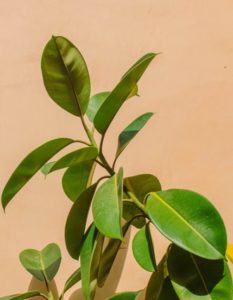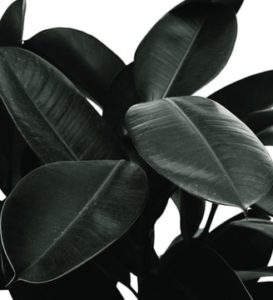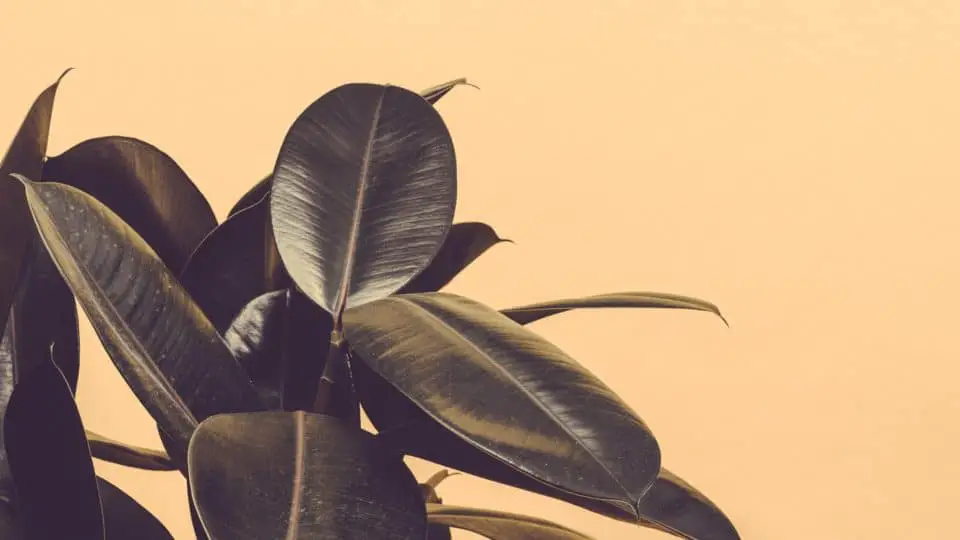Some links in the post are affiliate links and I get a commission from purchases made through some links found in the post.
Most people go for indoor plants that require minimal maintenance.
However, the common mistake people make is assuming that a hardy plant that has minimal maintenance can make do with almost anything. But that is not the case.
The rubber plant, scientifically known as Ficus Elastica, is one such species that has warmed its way into people’s hearts and homes.
Even with its minimal maintenance, this plant has proven to require more than the bare minimum. Its drooping leaves are a sign that even the hardiest of plants have their breaking points.
Today, we will look at how you can deal with drooping leaves, and why they are present in the first place.
Why are your Rubber Plant Leaves Drooping?
The first thing you should know is that the rubber plant is not a self-supporting plant.
In fact, the more it grows, the droopier it will appear. But that applies to the stalk and not the leaves. So, if the rubber plant leaves start drooping, the following causes are likely to blame:
- You are giving your plant too much water.
- You are underwatering your plant
- The humidity in the room is not optimal.
- You have exposed your plant to chemicals.
- Your plant is rootbound.
- The plant is not getting enough light.
How to Stop your Rubber Plant Leaves From Drooping?
To stop your rubber plant leaves from drooping it requires a balance in all its growing requirements.
You need to make sure you have the right lighting and humidity, it is correctly watered and is safe from pest attacks.
We will look at each of these possible causes, enabling you to pinpoint the problem in your home and fix it. Let’s get started:
Poor Root Development
 The rubber plant has extensive roots that grow in relation to the plant’s height. When growing in the outdoors, the rubber plant can become somewhat invasive by spreading its roots around a wide area.
The rubber plant has extensive roots that grow in relation to the plant’s height. When growing in the outdoors, the rubber plant can become somewhat invasive by spreading its roots around a wide area.
You can expect that it will grow at a fast rate even indoors. Luckily, thanks to the pot, the roots will not be as invasive and will probably cap their growth when the plant is 10 feet tall.
You will need to repot the plant once it’s root-bound. This repotting helps the plant have an easier time taking up water and nutrients from the soil.
If this is not done, the plant suffered poor growth, which shows in drooping of leaves, change in leaf colour, and stunted growth.
Rubber plants require repotting every two or three years depending on the variety. When repotting, you should go up a pot size in one or two sizes, but not more than this.
Otherwise, the plant will focus on extending its root system rather than growing upwards and outwards.
Given that it’s an indoor plant, it’s better to restrict its growth by limiting the pot size, but not to a point where the plants cannot grow healthily.
For example, if the plant is growing in a 1-gallon pot, you can go for a 2 gallon or 3-gallon pot.
What About Aerial Roots?
You may have noticed that your plant has some roots growing above the soil surface.
These are aerial roots that enable it to survive in the outdoors by anchoring to other items as the plant grows taller and wider.
This will not be necessary in the indoors, and you can either cut them off or allow them to continue growing.
You may also like: Why is my pilea drooping
Why is your Rubber Plant Leaves Drooping After Repotting?
Sometimes, this is exposed to transplant shock. However, to be safe, you should also roll out under-watering, over-watering, and over-fertilizing the plant.
Rubber plants are hardy and barely need any fertilization, so you can always skip this step.
Poor Lighting
The common assumption is that all plants require direct access to light.
While rubber plants do well in brightly lit environments, they do not appreciate direct exposure to the sun and will burn as a result.
Placing the plant in an area that receives low to no light causes drooping.
You have to find a balance between too much exposure and too little exposure.
It’s even more necessary when dealing with a variegated plant as it requires bright light for the colours to pop.
Place the plant near a window and protect it from the sun using a sheer or any other protective material.
Please note that in such conditions, your plant might require more watering owing to the loss of moisture during evaporation. We’ll get into that next.
Poor Watering Techniques
There are two main mistakes you can make when watering a rubber plant. You can either be giving it too much water or giving it too little water compared to its needs.
When and How Should you Water Your Plant?
 Watering needs for these plants will differ based on the growing season.
Watering needs for these plants will differ based on the growing season.
When the plant is actively growing such as during the summer, it will require more water compared to when it’s dormant such as during the winter.
The soil should be damp but not wet to give the plant just enough moisture to absorb nutrients from the potting mix.
Any more water than these causes drowning and predisposes the roots to root rot, which is fatal to the plant.
To know whether the plant requires water during the growing season, you should stick your finger an inch or two into the potting mix.
If it feels damp, the plant can go one or two more days without water. If the soil feels dry, you should dampen but not wet the soil.
The leaves also require to remain moist during the growing season, and you can achieve this by misting them or wiping them down with a damp cloth.
When the plant gets into its dormant stage, the goal should be to keep it from dying by watering it only when needed.
Stick your finger 2 inches into the soil and feel how dry it is. The soil should remain dry but not too dry.
Once the leaves start to droop, consider this an indication that the plant is not getting enough moisture.
You will need to dampen the soil, but not too much given that the plant does not require too much water during the stage.
Drooping leaves can also be an indication of root rot, which will require you to repot the plants as indicated earlier.
To check for this, you need to turn the plant over on its side and loosen the root ball.
If the root appears soggy and squishy, you will need to repot the plants after allowing the root ball to dry out in the sun for a few hours.
Humidity and Temperature Variations
Rubber plants do well in moist and humid areas owing to their tropical origin. That is not to say that they cannot do well in less humid areas.
However, if you notice that your plant is not doing so well, temperature variations might be to blame.
The temperatures might be on one end of the extreme scale. Your home may be too cold or too hot to support the ideal growth of the plant.
Ideally, the temperature should range between 60°F to 75°F.
During the colder months, the plant can withstand temperatures as low as 50°F. Consistency is very important with these plants and a small variation can cause drooping.
Start by assessing the temperature range in your home and looking at if you have had any recent drastic changes to the temperatures.
If the temperatures prove to be below or above the given range, you should move the plant to an area within the ideal range.
Chemical Exposure
Generally, your rubber plant will not need added fertilization and the potting mix will be enough to support its growth.
But if you do decide to add fertilizer, you should do so during the active growing season and applied as indicated by the manufacturer.
In the event that you use too much fertilizer, the leaves will start curling.
These effects can also be present if the leaves have been exposed to other contaminants such as gas fumes in the air.
The only way to deal with contamination is to repot the plant with fresh potting mix.
Pest Contamination
Your plant may also be facing attacks from pests such as mites, aphids, mealybugs, and scales.
On the upside, if you catch these attacks at an early stage, you can easily get rid of the pests by wiping the leaves with warm water and soap.
Insecticidal soaps are also available for use. Please note that overwatering your plant can also make it more susceptible to plant diseases.
Why are your Leaves Curling?
Other than chemical exposure, these effects can owe to poor watering techniques and low humidity.
Please note that when new growth happens, the leaves tend to curl until they are fully grown. In this case, it’s a normal occurrence and you should not worry about this.
Final Thoughts: How to Stop your Rubber Plant Leaves From Drooping
 Your rubber plant requires balance in all its growing requirements.
Your rubber plant requires balance in all its growing requirements.
If you focus on the lighting and forget to look at humidity or watering or pest attacks, your plant will droop.
Unfortunately, some of these problems such as over-watering are severe and can lead to the death of your plant.
The best way forward is to keep an eye on each aspect of your plant and make changes where you see fit.
Before you go, here are some more related articles I encourage you to read below to help solve more of your gardening issues:
Are Coffee Grounds Good For Fig Trees
Why Does Your Fiddle Leaf Fig Have Multiple Stems
3 Best Pots for a Fiddle Leaf Fig
Happy gardening!
Written by: Daisy Njeri

